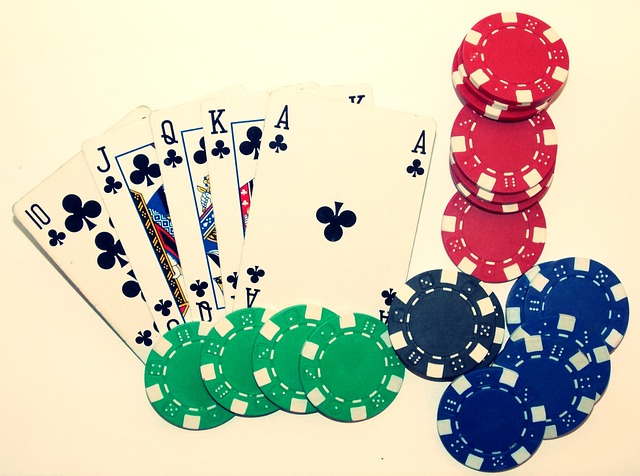Brick and mortar casinos have evolved over time, reflecting changing gambling culture and technology. Early casinos emphasized opulence and spectacle, while modern designs focus on functionality and minimalist aesthetics with open spaces. Today, successful brick and mortar casinos blend traditional elements with contemporary trends to create immersive entertainment spaces. They optimize floor layouts through strategic design, wayfinding, game mix, lighting, signage, color psychology, efficient circulation, advanced technologies like interactive screens and VR/AR, catering to the demand for engaging experiences in a competitive market.
Brick and mortar casinos have undergone a remarkable evolution, transforming from simple gaming halls to intricate entertainment hubs. This historical perspective delves into the design trends that shaped their spaces, from classic layouts to modern innovations. We explore key elements defining successful casino floor plans, focusing on flow, accessibility, and visual appeal. Additionally, we discuss how technology is revolutionizing the immersive experience, bringing land-based casinos into the future with interactive gaming and cutting-edge entertainment options.
- The Evolution of Brick and Mortar Casino Design: A Historical Perspective
- Key Elements of Successful Casino Floor Layouts
- Creating an Immersive Experience: Technology and Innovation in Land-Based Casinos
The Evolution of Brick and Mortar Casino Design: A Historical Perspective

The design of brick-and-mortar casinos has undergone a remarkable evolution, mirroring the shifts in gambling culture and technology over the decades. Historically, early casinos were designed to mimic grand European palaces or luxurious steampunks hubs, emphasizing opulence and a sense of spectacle. These establishments often featured ornate architecture, plush furnishings, and elaborate decor to create an atmosphere of elegance and exclusivity. The focus was on creating a visually stunning environment that would captivate visitors and enhance their gambling experience.
As the gambling industry grew and became more accessible, casino design began to evolve towards a more modern and functional aesthetic. Mid-20th century casinos started incorporating sleek, minimalist designs, focusing on open spaces, dramatic lighting, and innovative layout strategies to facilitate easier movement and betting options. This shift marked a transition from grand, static structures to dynamic, fluid environments designed to cater to a broader range of patrons. Today, brick-and-mortar casinos continue to innovate, blending traditional elements with contemporary design trends to create immersive, engaging spaces that offer diverse entertainment experiences beyond just gambling.
Key Elements of Successful Casino Floor Layouts

Successful casino floor layouts in brick and mortar casinos are a blend of strategic design elements that enhance the overall guest experience. Key components include intuitive wayfinding, ensuring players can navigate effortlessly between gaming zones. A balanced mix of table games, slot machines, and specialty areas like poker rooms creates a dynamic environment that caters to diverse preferences.
Esthetic appeal plays a significant role too. Strategic placement of lighting, signage, and decor contributes to an inviting atmosphere. The use of color psychology, for instance, can manipulate mood and encourage play. Additionally, efficient circulation patterns prevent congestion, allowing guests to move freely and enjoy the hustle and bustle of the casino without feeling overwhelmed.
Creating an Immersive Experience: Technology and Innovation in Land-Based Casinos

In today’s digital era, brick and mortar casinos are no longer just about spinning wheels and dealing cards. Technology and innovation play a pivotal role in creating immersive experiences that draw visitors back time and again. From sophisticated lighting and sound systems that enhance the atmosphere to interactive screens and mobile apps that offer personalized gaming options, these advancements transform traditional casino floors into vibrant, engaging environments.
Virtual reality (VR) and augmented reality (AR) technologies are also making their mark, offering players unique experiences like never before. For instance, VR allows patrons to step into virtual worlds where they can play games in a fully immersive setting, while AR enriches the gaming experience by overlaying digital information on real-world spaces. These innovations not only cater to the growing demand for interactive entertainment but also ensure that brick and mortar casinos remain competitive in a rapidly evolving market.
The evolution of brick and mortar casino design has transformed spaces from simple gaming halls to intricate, immersive experiences. By understanding historical trends and incorporating key elements like strategic layout, engaging technology, and themed environments, casinos can create successful floor plans that attract and delight players. As land-based casinos continue to innovate, embracing new technologies and designing captivating experiences remains essential to thrive in the competitive gaming market. These strategies ensure that brick and mortar casinos stay relevant, appealing to a diverse range of patrons while offering unforgettable memories.






